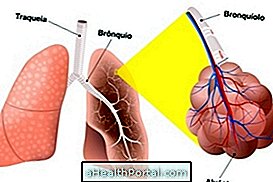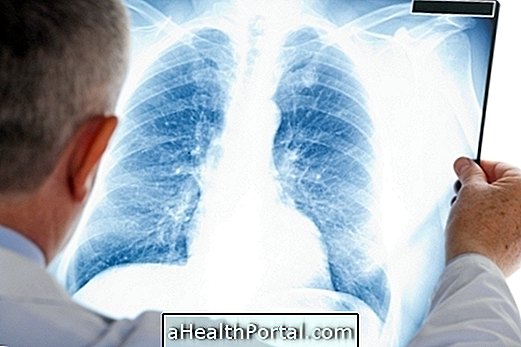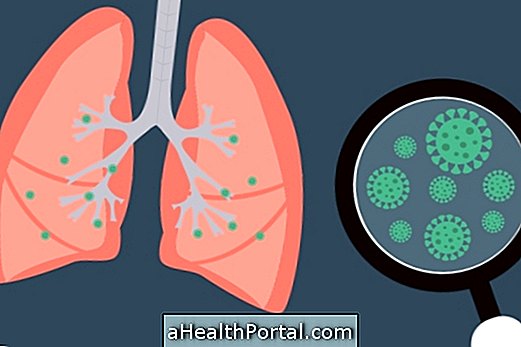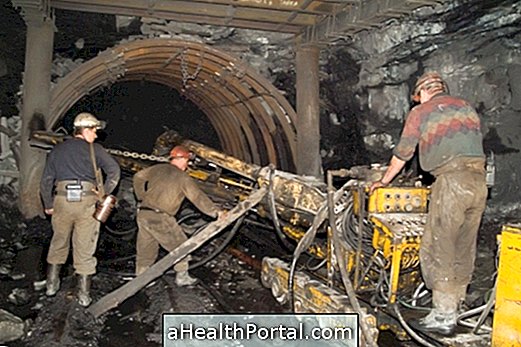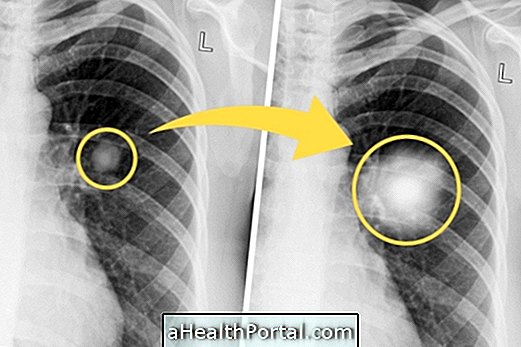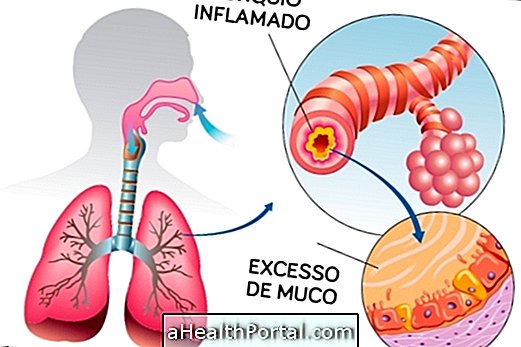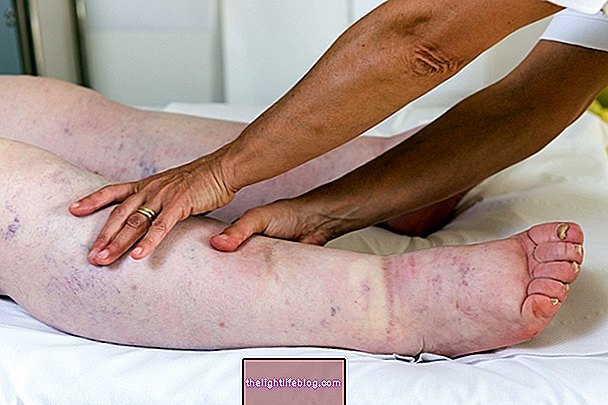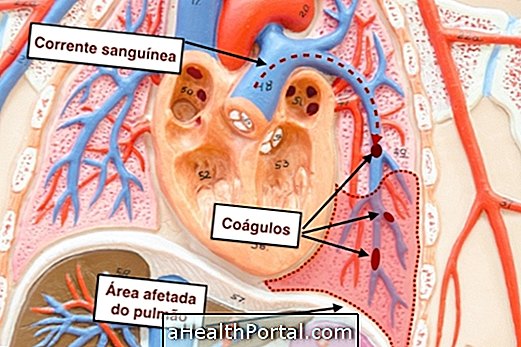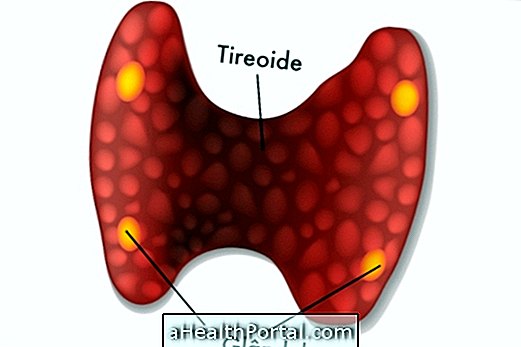Silicosis is a disease characterized by inhalation of silica usually due to occupational activity, which results in severe cough, fever and difficulty breathing. Silicosis can be classified according to the time of exposure to silica and the time symptoms appear in:
- Chronic silicosis, also called simple nodular silicosis, which is common in people who are exposed to small amounts of silica daily, and symptoms may appear after 10 to 20 years of exposure;
- Accelerated silicosis, also called subacute silicosis, whose symptoms begin to appear 5 to 10 years after the beginning of the exposure, being the most characteristic symptom the inflammation and desquamation of the pulmonary alveoli, being able to easily evolve to the most severe form of the disease;
- Acute or accelerated silicosis, which is the most severe form of the disease whose symptoms may appear after a few months of exposure to silica dust, and which can rapidly evolve into respiratory failure and lead to death.
This disease is more common to occur in people constantly exposed to silica dust, which is the main constituent of sand, such as miners, people working in the construction of tunnels and sandstone and granite cutters, for example.
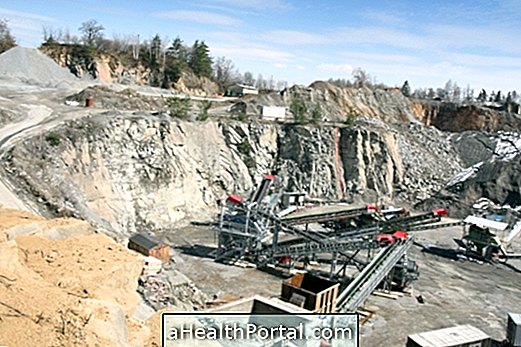
Symptoms of silicosis
Silica powder is extremely toxic to the body and therefore constant exposure to this substance may result in various symptoms, such as:
- Fever;
- Chest pain;
- Dry and intense cough;
- Night sweats;
- Shortness of breath due to exertion;
- Decreased respiratory capacity.
In the case of chronic silicosis, for example, due to prolonged exposure, there may be progressive formation of fibrous tissue in the lungs, which can result in dizziness and weakness due to the difficulty of oxygenation of the blood. In addition, people with silicosis are more likely to develop any type of respiratory infection, especially tuberculosis.
The diagnosis of silicosis is made by the work doctor or general practitioner through analysis of the symptoms presented, chest X-ray and bronchoscopy, which is a diagnostic test that aims to check the airway, identifying any type of alteration. Understand how bronchoscopy is done.
How is the treatment done?
The treatment of silicosis is done with the aim of alleviating the symptoms, and the doctor usually indicates the use of medicines to relieve cough and medicines that are able to dilate the airways, facilitating the breathing. In addition, if there is a sign of infection, the use of antibiotics, which are indicated according to the micro-organism causing the infection, may be recommended.
It is important that protective equipment is used in order to avoid exposure to silica dust and disease development. Therefore, it is of the utmost importance that people working in this environment wear goggles and masks that are capable of filtering the silica particles. In addition, it is important that mediated measures be taken to control the production of dust in the workplace.
The treatment of silicosis should be followed as directed by your doctor so that possible complications such as Chronic Obstructive Pulmonary Disease, pulmonary emphysema, tuberculosis, and lung cancer, for example, are avoided. If there is a disease evolution or complications, the doctor may recommend lung transplantation so that the patient has a restored quality of life. See how the lung transplant is done and how the postoperative is done.
